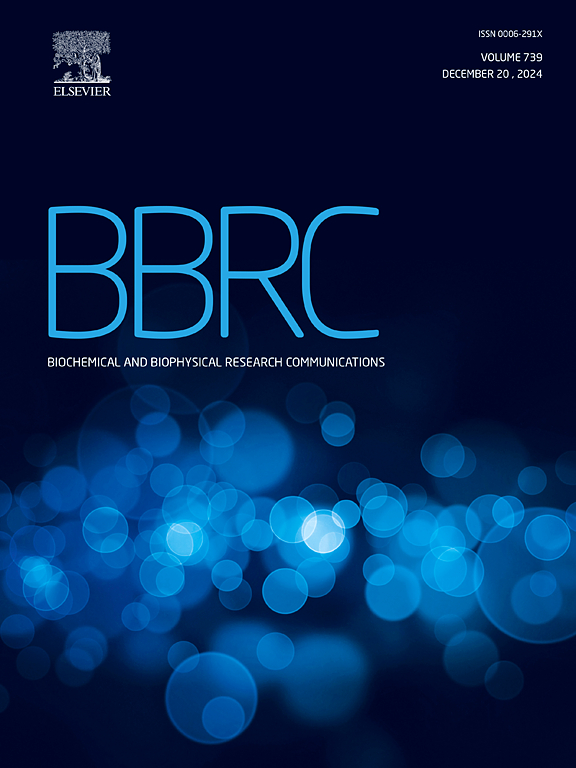Alleviation of fibrosis and oxidative stress in pressure overload-induced cardiac remodeling and heart failure via SIRT3 activation by colchicine
IF 2.5
3区 生物学
Q3 BIOCHEMISTRY & MOLECULAR BIOLOGY
Biochemical and biophysical research communications
Pub Date : 2025-05-08
DOI:10.1016/j.bbrc.2025.151957
引用次数: 0
Abstract
Heart failure (HF) is the end stage of many cardiovascular diseases, which is often associated with myocardial hypertrophy and cardiac remodeling. Among them, pressure overload-induced myocardial injury is one of the most common causes of heart failure. Colchicine, a drug widely used in the treatment of inflammatory diseases, has recently been found to significantly reduce the risk of cardiovascular events in patients with coronary artery disease and atrial fibrillation. However, the specific mechanism of colchicine has not been fully elucidated. We used the transverse aortic constriction (TAC) model to simulate cardiac pressure overload in mice. We found that colchicine attenuated TAC-induced heart failure and alleviated cardiac oxidative stress and fibrosis. To explore the specific molecular mechanism, we treated primary cardiac fibroblasts (CFs) and HL-1 with Ang Ⅱ in vitro to simulate the occurrence of TAC model. We found that colchicine induced SIRT3 activation and alleviated myocardial oxidative stress and cadiac fibrosis. Additionally, the SIRT3-selective agonist HKL exerts similar effects to colchicine, whereas the SIRT3-selective inhibitor 3-TYP partially reverses the therapeutic effects of colchicine. Our findings suggest that colchicine reduced cardiac oxidative stress and fibrosis by activating SIRT3, which in turn alleviated the progression of pressure overload-induced heart failure.
秋水仙碱激活SIRT3减轻压力超载诱导的心脏重构和心力衰竭中的纤维化和氧化应激
心衰(HF)是许多心血管疾病的终末阶段,通常与心肌肥大和心脏重构有关。其中,压力过载引起的心肌损伤是心衰最常见的原因之一。秋水仙碱是一种广泛用于治疗炎症性疾病的药物,最近发现它可以显著降低冠状动脉疾病和心房颤动患者心血管事件的风险。然而,秋水仙碱的具体作用机制尚未完全阐明。我们采用主动脉横缩(TAC)模型模拟小鼠心脏压力过载。我们发现秋水仙碱可以减轻tac诱导的心力衰竭,减轻心脏氧化应激和纤维化。为了探讨其具体的分子机制,我们在体外用AngⅡ处理原代心脏成纤维细胞(CFs)和HL-1,模拟TAC模型的发生。我们发现秋水仙碱可诱导SIRT3活化,减轻心肌氧化应激和心肌纤维化。此外,sirt3选择性激动剂HKL具有与秋水仙碱相似的作用,而sirt3选择性抑制剂3-TYP部分逆转秋水仙碱的治疗作用。我们的研究结果表明,秋水仙碱通过激活SIRT3来减少心脏氧化应激和纤维化,从而减轻压力过载引起的心力衰竭的进展。
本文章由计算机程序翻译,如有差异,请以英文原文为准。
求助全文
约1分钟内获得全文
求助全文
来源期刊
CiteScore
6.10
自引率
0.00%
发文量
1400
审稿时长
14 days
期刊介绍:
Biochemical and Biophysical Research Communications is the premier international journal devoted to the very rapid dissemination of timely and significant experimental results in diverse fields of biological research. The development of the "Breakthroughs and Views" section brings the minireview format to the journal, and issues often contain collections of special interest manuscripts. BBRC is published weekly (52 issues/year).Research Areas now include: Biochemistry; biophysics; cell biology; developmental biology; immunology
; molecular biology; neurobiology; plant biology and proteomics

 求助内容:
求助内容: 应助结果提醒方式:
应助结果提醒方式:


